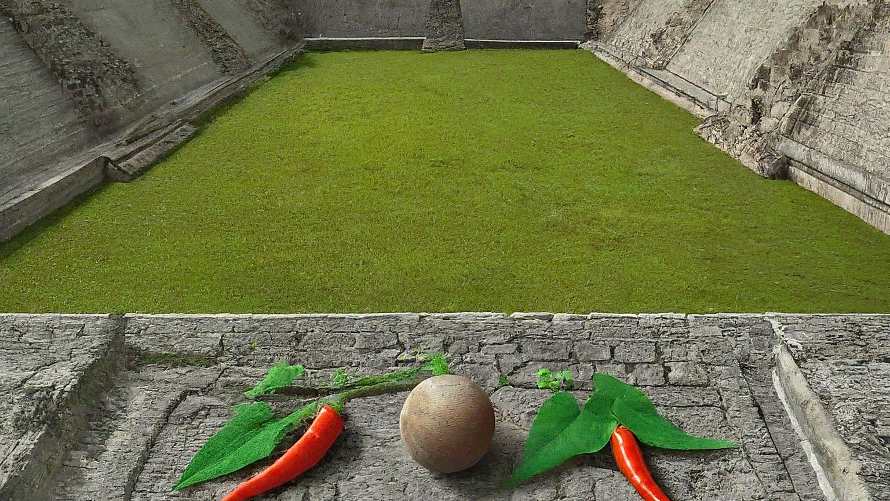Archaeologists at the University of Cincinnati have discovered evidence of a fascinating ritual performed by the ancient Maya during the construction of a ballcourt in the city of Yaxnohcah, Mexico. Using environmental DNA analysis, researchers identified a collection of plants with religious associations and medicinal properties beneath the ballcourt’s plaza floor, suggesting a ceremonial offering to appease the gods and seek their protection.
Ensouling Ritual: Seeking the Gods’ Blessing
“When they erected a new building, they asked the goodwill of the gods to protect the people inhabiting it,” UC Professor David Lentz said. “Some people call it an ensouling ritual, to get a blessing from and appease the gods.”
The research team, working through Mexico’s National Institute of Anthropology and History, excavated a small area of the ballcourt from 2016 to 2022. The ancient Maya played several ball games, including pok-a-tok, which has rules similar to soccer and basketball, with players attempting to get a ball through a ring or hoop on a wall.
Perishable Materials Preserved through eDNA
While ancient plant remains rarely survive in tropical climates due to rapid decomposition, the use of environmental DNA allowed researchers to identify several types of plants known for their ritual significance. The discovery included a morning glory called xtabentun, known for its hallucinogenic properties, as well as lancewood, chili peppers, and jool, the leaves of which were used to wrap ceremonial offerings.
“I think the fact that these four plants which have a known cultural importance to the Maya were found in a concentrated sample tells us it was an intentional and purposeful collection under this platform,” said UC Associate Professor Eric Tepe, a botanist who has studied modern plants in the same forests once traveled by the ancient Maya.
The findings contribute to the growing understanding of the sophisticated Maya culture, which is believed to have developed water filtration systems and employed conservation-minded forestry practices. However, the ancient Maya also struggled against years-long droughts and are thought to have deforested vast tracts for agriculture.
“We see the yin and yang of human existence in the ancient Maya,” Lentz said. “To me that’s why they’re so fascinating.”
The study, a collaboration between researchers from the University of Calgary, the Autonomous University of Campeche, and the National Autonomous University of Mexico, was published in the journal PLOS ONE.
Keyword phrase: Ancient Maya ballcourt ceremonial plant offerings
If our reporting has informed or inspired you, please consider making a donation. Every contribution, no matter the size, empowers us to continue delivering accurate, engaging, and trustworthy science and medical news. Independent journalism requires time, effort, and resources—your support ensures we can keep uncovering the stories that matter most to you.
Join us in making knowledge accessible and impactful. Thank you for standing with us!

